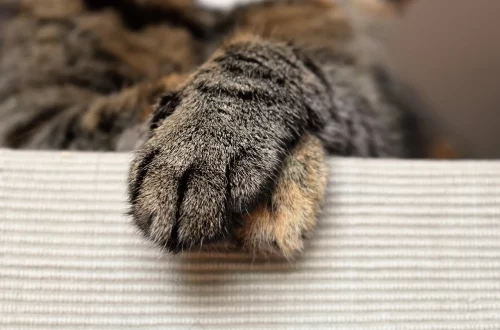
Doxycycline for Cats: Safe Use Without a Vet Prescription
Doxycycline, a broad-spectrum antibiotic, is commonly used in veterinary medicine to treat a variety of infections in cats. As pet owners become more aware of their cats’ health needs, the question arises: can you safely use doxycycline without a veterinarian’s prescription? This topic has become increasingly relevant, especially with the growing trend of self-medication among pet owners. Understanding the implications of administering antibiotics, the potential benefits, and the risks involved is essential for anyone considering this path for their feline companions.
Antibiotics like doxycycline are powerful tools in combating bacterial infections, but their misuse can lead to serious consequences, including resistance and adverse side effects. The unique physiology of cats requires careful consideration when it comes to dosage and administration. Therefore, it is crucial to explore the circumstances under which doxycycline may be used safely and effectively, as well as the importance of consulting a veterinary professional, even if a prescription is not deemed necessary.
In the following sections, we will delve into the specifics of doxycycline use in cats, examining its benefits, potential risks, and best practices for responsible pet ownership. This information aims to empower pet owners with knowledge while emphasizing the importance of professional guidance in ensuring the health and well-being of their furry friends.
Understanding Doxycycline and Its Uses in Feline Medicine
Doxycycline belongs to the tetracycline class of antibiotics and is widely used to treat various bacterial infections in cats. Its effectiveness stems from its ability to inhibit protein synthesis in bacteria, thereby preventing their growth and replication. This makes it particularly useful in treating respiratory infections, urinary tract infections, and certain skin conditions.
The versatility of doxycycline extends beyond mere infection treatment. It is also employed in managing diseases caused by specific parasites, such as Lyme disease and certain types of rickettsial infections. For pet owners, understanding the range of ailments doxycycline can address is vital, as it can significantly impact the quality of life for their cats.
Administering doxycycline requires caution, as the drug is not suitable for all felines. Young kittens, pregnant cats, and those with certain pre-existing health conditions may face increased risks when taking this medication. For instance, doxycycline can affect bone growth and teeth discoloration in developing kittens. Therefore, it is crucial for pet owners to weigh the potential benefits against the risks before considering doxycycline as a treatment option.
In addition to its clinical applications, doxycycline is often chosen for its ease of administration. It is available in various forms, including tablets, capsules, and a liquid solution, making it relatively simple for pet owners to find an option that suits their cat’s preferences. However, it is essential to follow dosage recommendations carefully, as improper use can lead to ineffective treatment or adverse effects.
While doxycycline can be a valuable tool in a pet owner’s arsenal, it is vital to remember that self-diagnosing and treating a cat without professional consultation can be risky. Understanding the complexities of feline health and the nuances of antibiotic use is key to ensuring that pets receive the best possible care.
Potential Risks and Side Effects of Doxycycline
While doxycycline can be an effective treatment for various infections in cats, it is not without its risks and potential side effects. As with any medication, it is essential for pet owners to be aware of these factors before administering doxycycline to their feline friends.
One of the most significant concerns with doxycycline is the possibility of gastrointestinal side effects. Cats may experience nausea, vomiting, or diarrhea when taking this antibiotic, which can lead to dehydration and further complications. If a cat exhibits these symptoms after starting doxycycline, it is crucial to consult a veterinarian for guidance.
Another potential risk involves the development of antibiotic resistance. Misuse of antibiotics can lead to bacteria adapting and becoming resistant to treatment, making future infections harder to manage. This is a growing concern in both human and veterinary medicine. Pet owners should be mindful of the importance of using antibiotics responsibly and only when necessary.
Additionally, doxycycline can interact with other medications. If a cat is on other treatments, it is crucial to discuss these with a veterinarian before starting doxycycline to avoid adverse reactions. Some common medications that may interact with doxycycline include antacids, certain supplements, and other antibiotics.
Furthermore, there are specific health conditions in cats that may contraindicate the use of doxycycline. For instance, cats with liver or kidney issues may struggle to metabolize the drug effectively, leading to a risk of toxicity. Pet owners should be aware of their cat’s health history and any ongoing treatments before proceeding with doxycycline.
Ultimately, while doxycycline can be an effective treatment for bacterial infections in cats, pet owners must approach its use with caution. Understanding the potential risks and side effects can help ensure that their feline companions receive safe and effective care.
Best Practices for Administering Doxycycline to Cats
If a pet owner decides to proceed with administering doxycycline to their cat, it is essential to follow best practices to ensure safety and efficacy. Proper dosage, timing, and adherence to guidelines can significantly impact the treatment’s success and the cat’s overall well-being.
First and foremost, accurate dosing is critical when administering doxycycline. Dosage is typically determined by the cat’s weight and the severity of the infection being treated. It is crucial to follow the recommended dosage instructions carefully, as overdosing can lead to serious health issues. If unsure about the appropriate dose, consulting a veterinarian is the best course of action.
Timing is another important factor. Doxycycline should be given at regular intervals to maintain consistent levels of the medication in the cat’s system. This approach maximizes its effectiveness and minimizes the risk of side effects. Pet owners should also be mindful of whether to administer the medication with food or on an empty stomach, as this can affect absorption. Generally, giving doxycycline with a small amount of food can help reduce gastrointestinal upset.
Monitoring the cat’s response to treatment is also essential. Pet owners should keep a close eye on their cat for any adverse reactions or changes in behavior. If any concerning symptoms arise, such as persistent vomiting, diarrhea, or lethargy, it is imperative to seek veterinary advice promptly.
Lastly, it is essential to complete the full course of doxycycline as prescribed, even if the cat appears to be feeling better. Stopping the medication prematurely can lead to the resurgence of the infection and contribute to antibiotic resistance. Pet owners should ensure that they have enough medication to complete the treatment and should not hesitate to reach out to a veterinarian if additional doses are needed.
By following these best practices, pet owners can help ensure that their cats receive the best possible care when using doxycycline. While self-treatment can be tempting, the importance of professional veterinary guidance cannot be overstated in ensuring the health and safety of feline companions.
**Disclaimer**: This article is for informational purposes only and does not constitute medical advice. For any health-related concerns regarding your pet, it is essential to consult a qualified veterinarian.




